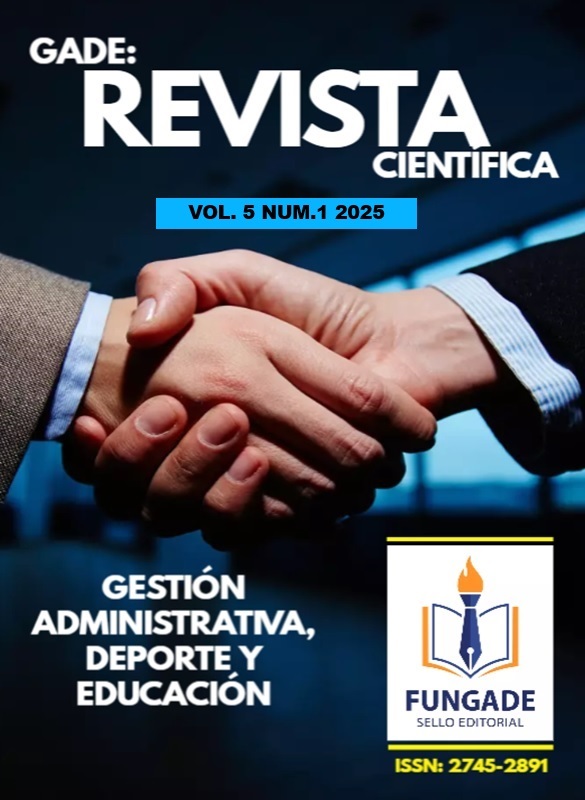Poverty: A Driver of School Dropout in the Urban Zone of Pichincha, Ecuador.
Abstract
School dropout is a critical problem that affects the personal and social development of children and adolescents, perpetuating the cycle of poverty. According to the Ministry of Education (2024), the school dropout rate in the urban area of Pichincha during 2022-2023 was 1.72%. In this context, poverty limits access to educational resources and affects students' ability to continue their education. This explanatory study analyzes how poverty impacts educational continuity, creating barriers that hinder learning and affect the physical and mental health of students. Using a qualitative-quantitative approach, 30 teachers were surveyed and tools such as SPSS and ATLAS.ti were used for data analysis. The findings reveal that poverty is a key factor in school dropout, with an average of two students dropping out monthly per institution, and a high perception among educators that poverty contributes directly to school dropout and the lack of correlation between the cantons studied indicates the need for area-specific strategies. It is essential to implement comprehensive interventions to improve living conditions and ensure equitable and accessible educational opportunities.
Downloads
References
Ayón, P. G. I., Muñiz, J. L. P., & Ramírez, V. W. D. (2019). Nivel de pobreza y su incidencia en la calidad de vida de los habitantes de Puerto Loor del cantón. Polo del Conocimiento, 4(7), 327-342. file:///C:/Users/User/Downloads/Dialnet-NivelDePobrezaYSuIncidenciaEnLaCalidadDeVidaDeLosH-7164374.pdf
Buiza C, L. G. (2024). Desempeño docente en la prevención de la deserción escolar en instituciones educativas de Lima-2023. https://repositorio.ucv.edu.pe/handle/20.500.12692/139236
Carrión et al., (2023). Causas y consecuencias de la deserción escolar en el contexto ecuatoriano. Revista Polo del Conocimiento, 8 (11), 927-945. https://orcid.org/0009-0004-2176-3442
Cipollene, D. (2022). ATLAS.TI COMO RECURSO METODOLÓGICO EN INVESTIGACIÓN EDUCATIVA. [Investigación explicativa, Universidad Católica de Córdoba. file:///C:/Users/DELL/Downloads/admin,+Art.+9_+Eje+4+USO+HERRAMIENTAS.pdf
Corona Martínez, L. A., & Fonseca Hernández, M. (2023). Las hipótesis en el proyecto de investigación:¿ cuándo si, cuándo no?. MediSur, 21(1), 269-273. http://scielo.sld.cu/scielo.php?pid=S1727-897X2023000100269&script=sci_arttext&tlng=pt
Mayorga et al., (2021). Educación y Salud Boletín Científico Instituto de Ciencias de la Salud Universidad Autónoma del Estado de Hidalgo. Revista Salud y Educación, 10, 282-284. https://repository.uaeh.edu.mx/revistas/index.php/ICSA/issue/archive
Maldonado, D., Neira, I., Ambi, J., Diaz, M., & Cabezas, P. (2023). Identificación de los factores de la deserción académica en el sistema educativo del ecuador. Ciencia Latina, 7(2), 11121-11136. https://doi.org/10.37811/cl_rcm.v7i2.6190
Rivera, R., Oyola, A., Marmolejo, G., Rivera, D., & Vásquez, C. (2023). Causas y consecuencias de la deserción escolar en el contexto ecuatoriano. Polo del Conocimiento. 8(11), 927-945. https://doi.org/10.23857/pc.v8i11.6246e
Zúñiga, P. I. V., Cedeño, R. J. C., & Palacios, I. A. M. (2023). Metodología de la investigación científica: guía práctica. Ciencia Latina, 7(4), 9723-9762. https://doi.org/10.37811/cl_rcm.v7i4.7658
Copyright (c) 2025 Heidy Gómez De la Torre,Daniela Aguilar ,Mayari Ramírez,Oscar Moscoso ,Johanna Lizbeth Rojas López

This work is licensed under a Creative Commons Attribution-NonCommercial-NoDerivatives 4.0 International License.






